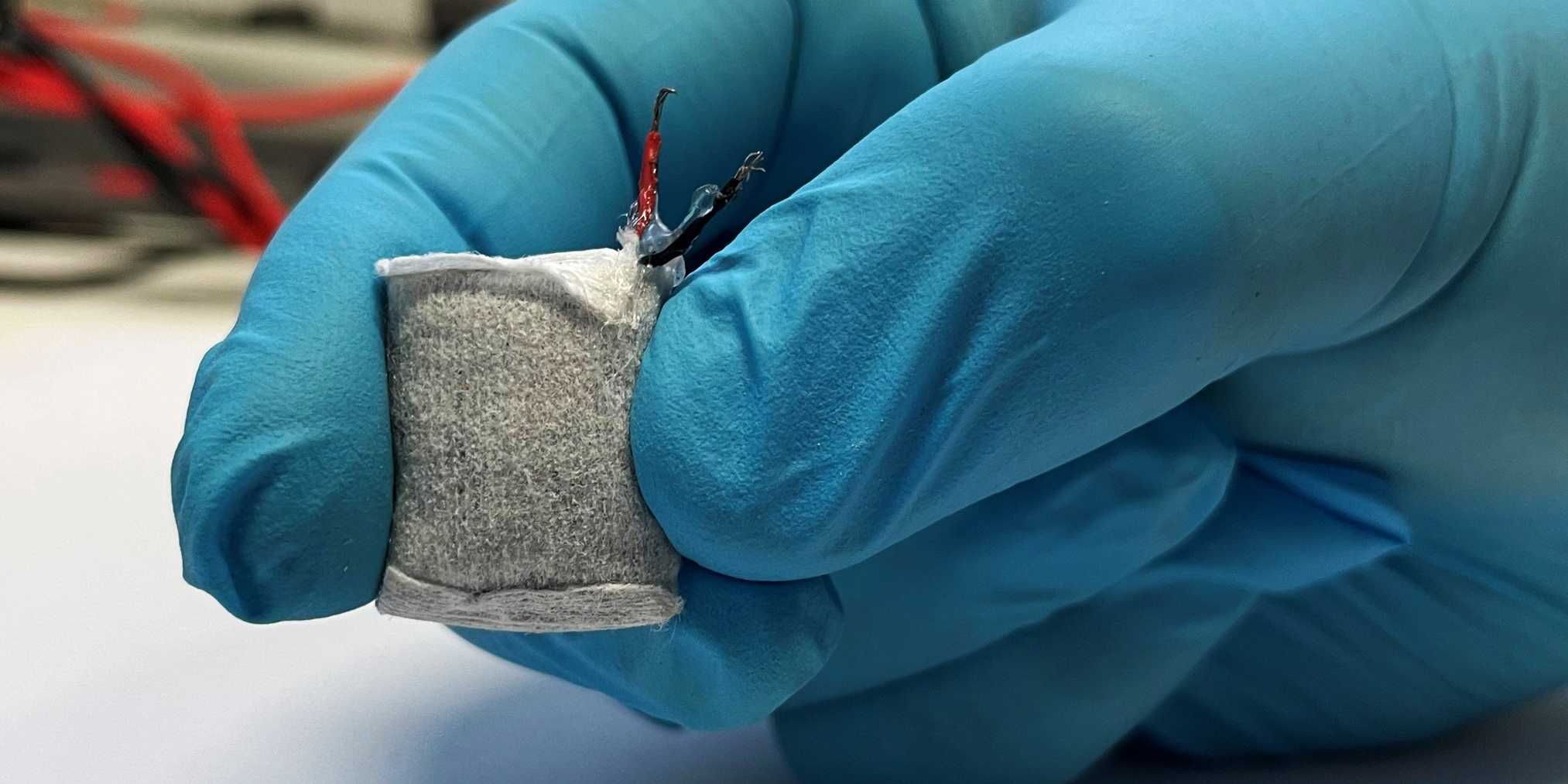2023-03-28 スイス連邦工科大学チューリッヒ校(ETHZurich)
 The prototype fuel cell is wrapped in a fleece and is slightly larger than a thumbnail. (Photograph: Fussenegger Lab / ETH Zurich)
The prototype fuel cell is wrapped in a fleece and is slightly larger than a thumbnail. (Photograph: Fussenegger Lab / ETH Zurich)
この燃料電池を人工インスリン分泌β細胞と組み合わせることで、血糖値を自律的に調整するシステムが実現できる。
この燃料電池は、非織布で包まれ、体内に埋め込むことができる。現在、市場に出るかどうかは不明だが、将来的には医療機器を動かすために使用される可能性がある。
<関連情報>
- https://ethz.ch/en/news-and-events/eth-news/news/2023/03/press-release-generating-power-with-blood-sugar.html
- https://onlinelibrary.wiley.com/doi/10.1002/adma.202300890
血糖を動力源とする代謝性燃料電池で、自給自足型のバイオエレクトロニクスを実現 Blood-Glucose-Powered Metabolic Fuel Cell for Self-Sufficient Bioelectronics
Debasis Maity, Preetam Guha Ray, Peter Buchmann, Maysam Mansouri, Martin Fussenegger
Advanced Materials Published: 09 March 2023
DOI:https://doi.org/10.1002/adma.202300890
Abstract
Currently available bioelectronic devices consume too much power to be continuously operated on rechargeable batteries, and are often powered wirelessly, with attendant issues regarding reliability, convenience and mobility. Thus, the availability of a robust, self-sufficient, implantable electrical power generator that works under physiological conditions would be transformative for many applications, from driving bioelectronic implants and prostheses to programing cellular behaviour and patients’ metabolism. Here, capitalizing on a new copper-containing, conductively tuned three-dimensional carbon nanotube composite, we designed an implantable blood-glucose-powered metabolic fuel cell that continuously monitors blood-glucose levels, converts excess glucose into electrical power during hyperglycemia and produces sufficient energy (0.7 mW cm-2, 0.9 V, 50 mM glucose) to drive opto- and electro-genetic regulation of vesicular insulin release from engineered beta cells. We show that this integration of blood-glucose monitoring with elimination of excessive blood glucose by combined electro-metabolic conversion and insulin-release-mediated cellular consumption enables the metabolic fuel cell to restore blood-glucose homeostasis in an automatic, self-sufficient and closed-loop manner in an experimental model of type-1 diabetes.


